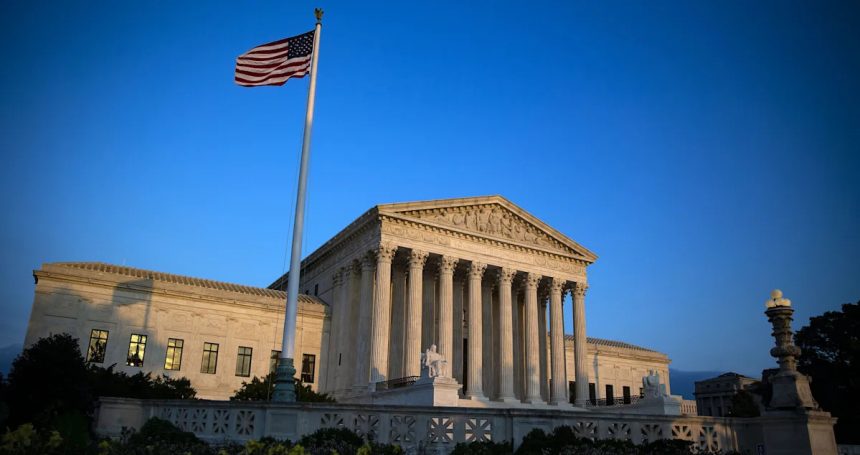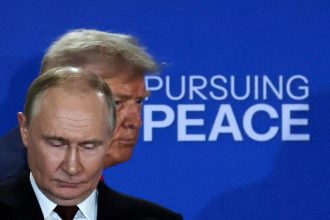The Supreme Court heard arguments on President Trump’s tariffs on Wednesday. Most of the justices, including several key conservatives, expressed at least some skepticism about whether the president’s sweeping tariff regime is legal.
In the case, which Trump has labeled “one of the most important in the History of the Country,” the justices will decide whether Trump was acting outside of his authority when he imposed widespread tariffs on more than 100 countries earlier this year.
The outcome will have a major impact on American businesses and consumers, while creating ripple effects for the entire global economy.
How we got here
The case, Learning Resources v. Trump, centers around a 1977 law called the International Emergency Economic Powers Act (IEEPA) that grants presidents power to respond to “unusual and extraordinary” threats during national emergencies.
Trump declared a national economic emergency in April, arguing that America’s trade deficit with other nations constitutes an “unusual and extraordinary threat to the national security and economy of the United States.” He then used that emergency declaration as the legal ground for his “Liberation Day” tariffs. In a Rose Garden ceremony on April 2, the president announced that he was placing a baseline tariff of 10% on goods from nearly all countries, plus much higher rates on dozens of individual nations.
Tariffs are taxes placed on foreign goods that are imported into the U.S. They are paid by American companies, which frequently raise prices for consumers to offset their increased costs.
Trump’s April tariffs — which were in addition to separate levies he had placed on China, Mexico and Canada under the same law — sent global markets into chaos and left nations around the world reeling as they scrambled to respond. A flurry of lawsuits soon followed.
There’s little doubt that Trump’s use of the IEEPA for tariffs is unprecedented. No other president has ever invoked it in this way before. The question is whether the law gives him the power to do it.
So far, the courts have uniformly found that it doesn’t. In three separate rulings, lower courts have determined that Trump overstepped his legal authority when he imposed his “Liberation Day” tariffs. The most recent decision came in August, when a federal court of appeals found that, while the IEEPA does give presidents significant authority during emergencies, “none of these actions explicitly include the power to impose tariffs, duties, or the like, or the power to tax.” The appeals court allowed the tariffs to temporarily stay in place in anticipation that the president would appeal its decision.
The Trump administration did just that less than a week later. The Supreme Court then agreed to add the case to its fall term.
What happened in oral arguments?
The court’s three liberal justices expressed strong skepticism about the legality of Trump’s tariffs on Wednesday.
“It’s a congressional power, not a presidential power, to tax,” said Justice Sonya Sotomayor, who was appointed by former President Barack Obama.
If all three liberals rule against the Trump administration, they would need at least two of the court’s six conservatives to join them in order to invalidate the tariffs. Though none gave a definitive indication of how they might rule, the oral arguments provided reason to believe that three conservative justices have some doubts about the Trump administration’s case.
Chief Justice John Roberts specifically asked whether the tariffs might fall under what’s known as the “major questions” doctrine, a relatively new legal framework that limits the power of the president to act without congressional approval when it comes to matters that have a substantial impact on the country. During the Biden administration, the major questions doctrine was used as the rationale for knocking down student loan forgiveness, environmental regulations and a slate of pandemic-era health policies.
Justice Neil Gorsuch asked pointed questions about whether it was constitutional for the executive branch, rather than Congress, to impose taxes under the IEEPA, calling it a “one-way ratchet” that has shifted power “away from the people’s elected representatives.”
Justice Amy Coney Barrett also questioned whether such sweeping tariffs were necessary to address the supposed imbalances in America’s trade relationship with the rest of the world. “I mean, I could see it with some countries,” she said, but asked the Trump administration’s lawyer to explain why most other nations “needed to be subject to the reciprocal tariff policy.”
In order to side with Trump in the tariffs case, the justices would need to look past the specific language of the law, which does not mention “tariffs” or “taxes.” They would also need to agree with the president’s view that the U.S. trade deficit, which has existed for the past 50 years, counts as an “unusual and extraordinary threat.”
Despite the skepticism from those three conservatives, the final outcome in the case is still very much in doubt and Trump has built a consistent record of wins at the Supreme Court since he returned to the White House.
Over the past 10 months, the court’s conservative supermajority has repeatedly ruled in his favor when asked to determine the limits of his presidential authority. Among other things, it has allowed him to carry out his aggressive immigration crackdown, fire federal workers and override Congress’s spending decisions. In each of those instances, Trump has acted in ways that go well beyond the previously understood bounds of executive authority. The court also issued a ruling in June that strictly limited the legal pathways that lower courts can use to block his policies from being enacted.
What’s at stake?
Trump’s tariffs have dramatically altered the U.S. economy and America’s relationship with its global trading partners.
As of September, Trump’s tariffs — including some that won’t be impacted by this case — had raised $195 billion in revenue from foreign imports. That’s two and a half times the amount that was raised during the same period in 2024. That additional tax money has come at a significant cost, though.
Most economists agree that American consumers are bearing most of the burden of Trump’s tariffs in the form of higher prices. The policy has significantly increased inflation and raised expenses for the average U.S. household by as much as $1,800, according to experts. The tariffs could cost global businesses a combined $1.2 trillion over the course of this year, according to research firm S&P Global.
Tariffs have also been one of Trump’s most important foreign policy tools. He has repeatedly wielded them as a way to punish countries that go against him and promised to offer relief when they agree to his demands. If the justices take away Trump’s power to use tariffs in this way, he will lose one of his most potent points of leverage in negotiations with the rest of the world.
When will a decision be made?
The Supreme Court usually takes months to hand down its rulings after oral arguments. Most cases in its fall term won’t be decided until late spring or early summer. Given the stakes, the justices could choose to release their opinion on an expedited schedule, but there’s currently no official timeline for when their decision might be handed down.









